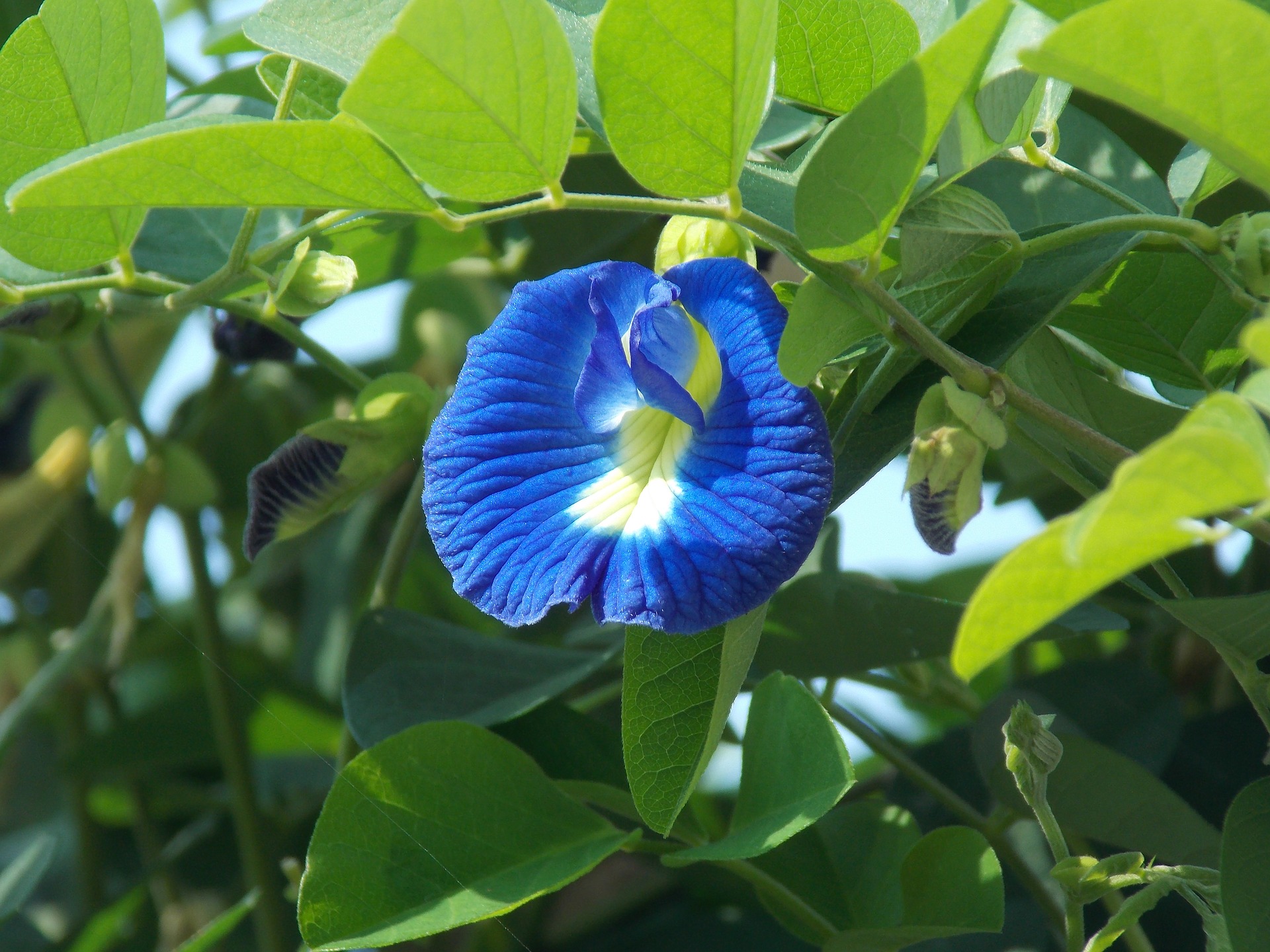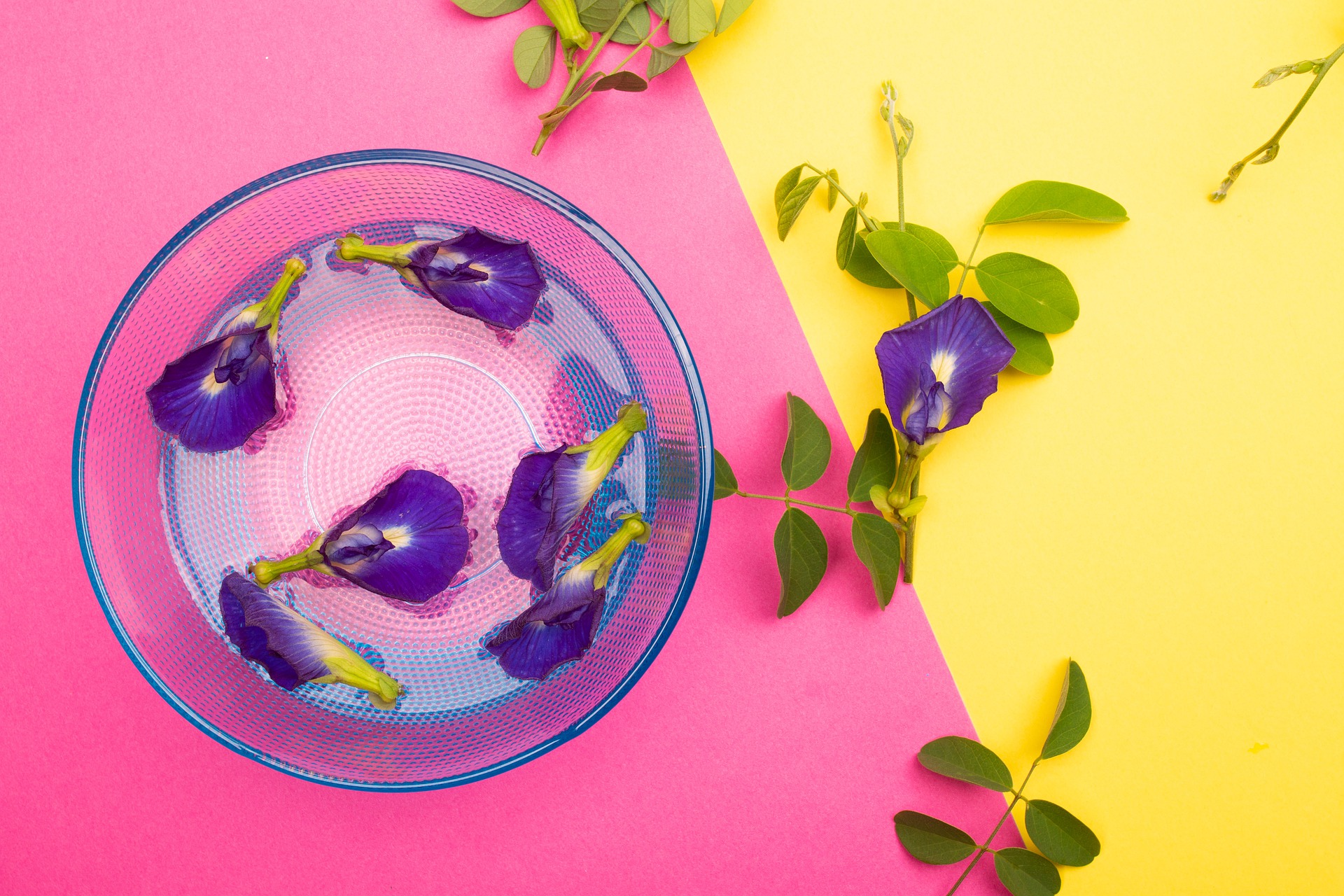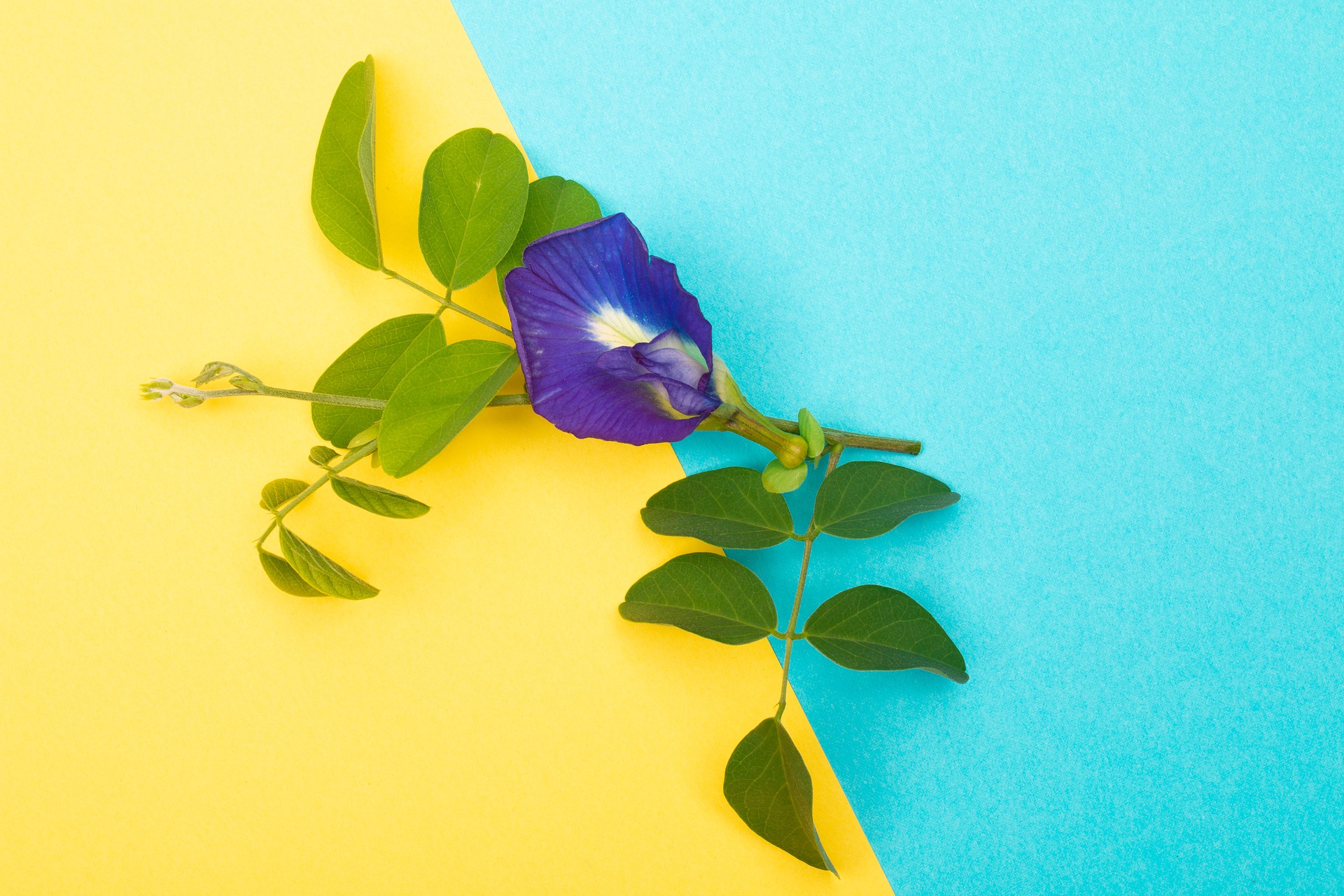Butterfly pea is a plant that is not known and not much used in western world. Personally, I got acquainted with the plant in Asia, where it grows wild quite commonly in small forests and roadside areas. The butterfly pea is not actually a rainforest plant although it needs warm and moisture to thrive. In this story, I’ll tell you about the great features of butterfly pea and how many different ways you can take advantage of it.

Butterfly pea; The sacred flower of India
The butterfly pea is native to Asia. It is a fairly common “weed” in South and Southeast Asia. The Latin name Clitoria ternatea tells of the appearance of the flower. It somehow resembles a clitoris. Ternate is again a city in Indonesia from which the botanist Linnè found a flower and gave it a name. Today, butterfly pea has also spread to the continents of America, Africa and Australia.
Butterfly pea flowers are sacred flowers in India. They are an important part of the daily worship ritual, the puja. The puja ritual means worshipping different Gods. The idea is to provide food, water, light, and flowers as a symbol of love to the Gods. The Puja ritual is a very integral part of the Hindu tradition. In Asia, people are seen daily practicing Puja rituals in their yards. The Puja ritual originally meant a flower sacrifice to the gods. An important flower in this ritual has always been the butterfly pea.
A rare, deep blue colour is characteristic of a butterfly pea
Butterfly pea as a plant is quite modest. It is a climbing plant that thrives in places where only hay thrives. Dusty, dry roadside area is the home of butterfly pea. Dry forest side areas are often blue with butterfly pea flowers. The blue colour is very intense. It’s hard to come up with anything that would be as blue.
Butterfly pea is also grown in gardens. The plant spreads on the ground and covers large areas with its blue flowers. Butterfly pea is a great undergrowth in tropical gardens.
As a pea plant, the roots of the butterfly pea form a symbiosis with the soil bacteria. The phenomenon is known as rhizobia. The root nodules of a plant contain rhizobia bacteria that bind nitrogen, converting it to a form suitable for the plant.
Butterfly pea is part of Far Eastern culinary culture
The butterfly pea is an integral part of the food culture of India, Indonesia and Thailand. The blue-coloured rice is obtained with the flowers of a butterfly pea. Many drinks get their colour from the butterfly pea. For example, there is a colour-changing gin for sale. The drink is beautifully blue first. If you drop a slice of lime in it, it will instantly turn purple red. At its most typical form, however, butterfly pea is a non-alcoholic beverage served both hot and cold with ice.
Butterfly pea is an important part of Ayurvedic medicine
Butterfly pea is a highly antioxidant plant with absolutely incredible effects on health. Ayurveda is an Indian traditional medicine that was established as early as the Vedic period. In Ayurveda, the butterfly pea plant is used to improve memory, relieve stress, depression, anxiety and prevent seizures.
The Chinese use the butterfly pea plant to increase female libido as the plant resembles the clitoris.
Butterfly pea extract has been shown in some studies to affect the problems caused by the neurotransmitters like serotonin and acetylcholine.
Due to its rich blue colour, the butterfly pea plant is also used for dyeing fabrics and yarns.
Butterfly pea is perfect plant for cosmetics
Butterfly pea has really a lot to give to cosmetics. The intense blue colour of the plant is really welcome in many products. Blue is best utilized in soaps and other alkaline products. The colour changes to a beautiful purple if the pH of the product is below 7. This is usually the case with all products left on the skin. There are very limited amounts of dyes in natural cosmetics. If mica colours are not included, only shades of orange (yellow base) are available in shades of red. The natural, blue-refracting shades of red I cannot think about other than the butterfly pea.
Butterfly pea is very therapeutic in skin care

Butterfly pea contains the same flavonoid called anthocyanin as, for example, super healthy wild blueberries. Butterfly pea anthocyanin just isn’t that messy and smudging than blueberry. The anthocyanins contained in the butterfly pea are called deacyl ternatine, ternatins (A1, A2, B1, B2, D1, D2), etc.
Polyphenols such as proanthocyanidin contained in the butterfly pea are powerful antioxidants. They stimulate the natural production of collagen and elastane and thus affect the elasticity of the skin. Antioxidants also soothe the skin and prevent inflammation. Such a feature is good, for example, in products used after sunbathing.
Butterfly pea has been of interest to cosmetic manufacturers for a long time. In one study, fermented butterfly pea extract was tested on irritated skin. The extract relieved itching, soothed the skin and reduced inflammation. Fermented a butterfly pea could be an even more effective antioxidant.
A particularly good feature of Butterfly pea is that it is astringent. The extract made from the flowers is a particularly good base for toners. Butterfly pea toner shrinks pores, soothes and brightens the skin and fights the signs of aging.
The butterfly pea cares for the scalp
Butterfly pea extract is used as a medicine for hair loss due to the anthocyanins it contains. Anthocyanins nourish hair follicles. This promotes hair growth and prevents hair loss. Therefore, butterfly pea extracts are quite often found in hair products such as shampoos, conditioners and hair masks.
I hope that the wonderful properties of butterfly pea would be better known

Currently, dried inflorescences of butterfly pea are quite difficult to find. Although the plant is as common in Asia as chamomile in Europe, it has not gained the attention of the general public. I wrote this article about butterfly head just because you could get excited to try it. I already mentioned the beautiful blue butterfly pea flowers in my book Home Cosmetics – Raw Materials and Manufacturing.
If you are able to get dried flowers of butterfly pea you can use them in many of your projects. The flowers remain good for about a year depending on, of course, how old they are when purchased. Store flowers in a light, cool, dry place. However, not in the refrigerator. I prefer to keep my own flowers in a paper bag, as they do not contain volatile aromatic substances. The flowers are completely odourless. In the dry room air, protected from light, the flowers remain flawless.
Usually only 4-5 flowers are needed for cosmetics. You can use the remaining flowers, for example, as a tea or you can prepare a fresh, cold drink from the flowers. This way, you also get good antioxidants for your skin internally. The tea has a mild taste and is suitable for the whole family.
